
3D Foot Scanner with caster base
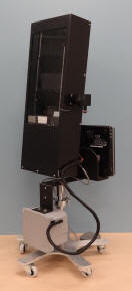
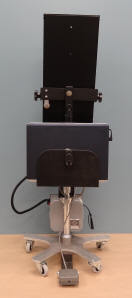
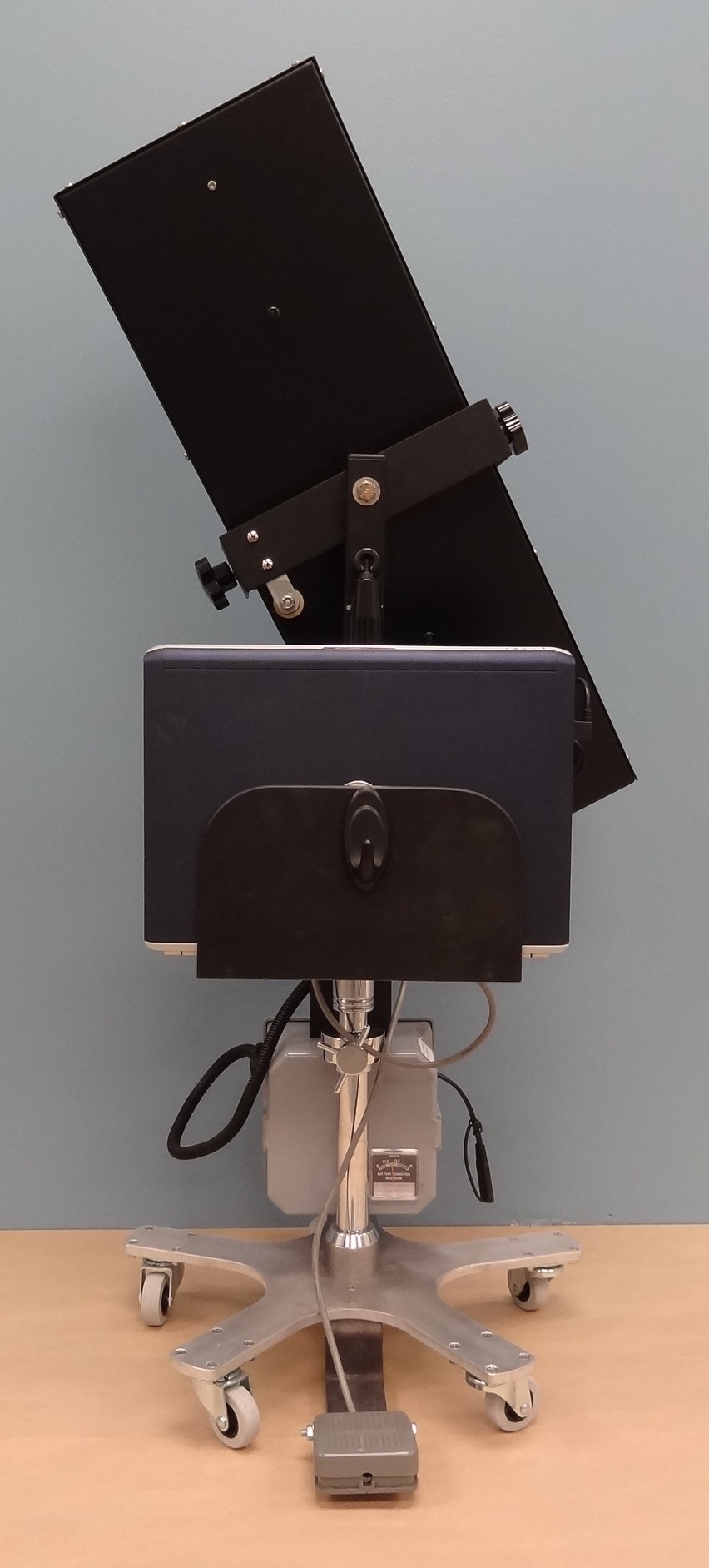
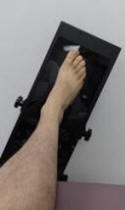

Capturing an image of the foot for production of custom orthotics using an optical scanner saves time and eliminates the mess of using plaster. The images are sent to the lab electronically which reduces costs and decreases turnaround time.
The Sharp Shape 3D USB Laser Foot Scanner is one of the few optical scanners that is able to capture the full contour and position of the posterior aspect of the heel. This is necessary in order to evaluate the forefoot-to-rearfoot relationship and properly design a balanced foot orthotic.
The Sharp Shape 3D Laser foot scanner was originally designed and built by Dr. Alex Shang in 1993. Sharp Shape also designed the Automated Orthotic Manufacturing System (CAD/CAM)which Cox Orthotics has used since 2005. There have been many upgrades and improvements in the scanner system since it was first designed.
The scanner requires a computer with Windows OS. The scan time is 5 seconds.
The benefits of the Sharp Shape Scanner are:
*Saves time and money
*Provides a perfect model of the foot for orthotic fabrication
*Eliminates messy, time consuming plaster casting
*Eliminates cost of expensive STS casting material
*Eliminates having to get down on the floor on your knees to make foam impressions
*Provides consistent results
*Allows practitioner to plantar flex the 1st ray
*Quicker orthotic turn-around time
*Quick and easy to re-do scan if needed
We have developed several hardware upgrades for the Sharp Shape scanner which make it more user friendly and portable:
*Tri plane mounting bracket
*Very stable five caster 19" diameter 3/8" thick aluminum base with integrated foot switch
*Re-chargable battery pack
*Integrated laptop computer caddy
*Folding handle to improve operators' positioning and scanner stability when moving
Practitioners interested in learning more about the Sharp Shape foot scanner should contact our lab.
Foot Scanner Light Shield
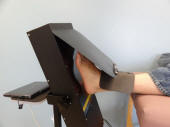
The Foot Scanner Light Shield is designed to block light which causes distorted images. Without blocking room light, it is necessary to turn the lights off and close window blinds in order to obtain satisfactory foot scan images.
Artificial light from overhead lights and natural light from windows cause unwanted “noise” or distortion on the scanned image.
The Foot Scanner Light Shield allows you to take good quality scans without turning off room lights. The Foot Scanner Light Shield simply rests on the patients lower leg. It weights only 8 oz. The hinged shield blocks the light to the scanner window while allowing the practitioner to hold the foot in the correct position.
Tips on using the foot scanner
With the patient in the supine position, position the patients' leg so that the foot and ankle are extended past the edge of the table. Move the patients' STJ through the supinated and pronated positions and determine the neutral position by grasping the 4th and 5th digits. Determine the patients' external leg position and allow it to rest in that position. Maximally pronate the midtarsal joint the same way you do when taking a plaster cast impression. Either dorsiflex the hallux or press down slightly on the distal aspect of the 1st metatarsal to get a feel for the true plantar flexed position of the patients' 1st metatarsal.
While holding the foot in neutral position, position the glass window of the scanner so that the foot is above the line and is angled on the transverse plane so that the long axis of the foot is inline with the center of the window. Move the scanner as close to the plantar aspect of the foot as possible. The foot should not be touching the glass. With the foot held in neutral position and the hallux dorsiflexed or the 1st metatarsal head pressed down, press the scanner foot pedal to scan the foot and capture the image.